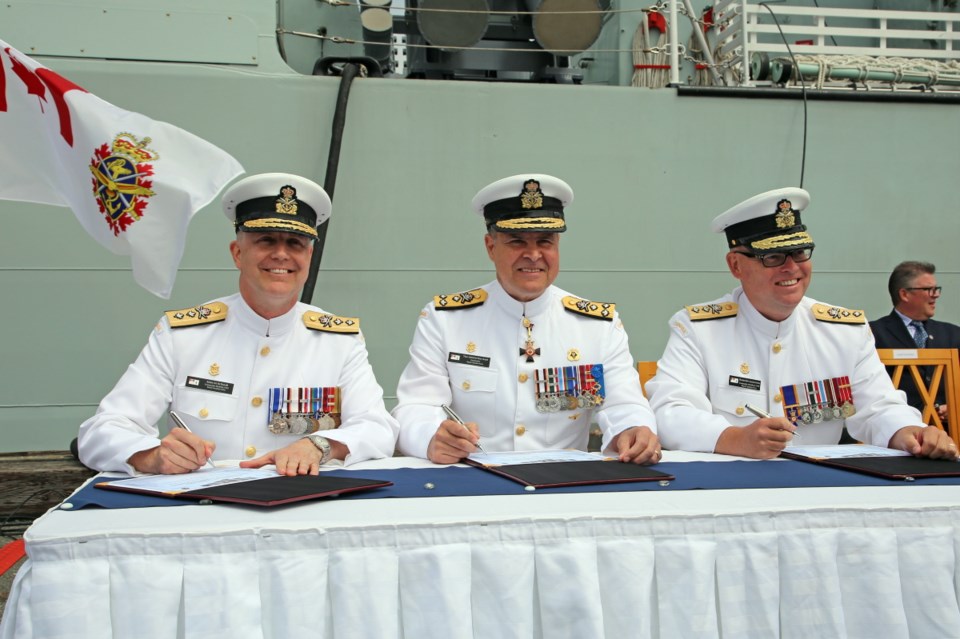Command of Canada’s Maritime Forces Pacific passed to the hands of a son of Vancouver Island on Friday.
The Cumberland-born Rear Admiral Bob Auchterlonie, 49, is back on the Island with his wife, Tammy, and two sons to take command of the roughly 4,000 military members on the West Coast and the 2,000 civilian workers who support them.
“It’s great to be back home,” Auchterlonie told reporters after a ceremony that saw sailors unfurl his admiral’s flag aboard HMCS Calgary, tied up at CFB Esquimalt. Auchterlonie previously served as base commander for CFB Esquimalt and commander of the Canadian Pacific Fleet.
Maritime Forces Pacific operates five of Canada’s 12 frigates, three of its four submarines, six coastal defence vessels and eight Orca-class training vessels.
Auchterlonie replaces Rear Admiral Art McDonald, who is going to Ottawa to become deputy commander of the Royal Canadian Navy.
McDonald served two years as commander of Maritime Forces Pacific. During that time, the navy undertook a new level of engagement in the Pacific.
In 2016, for example, HMCS Vancouver, nearing the end of six months at sea, responded to a call for help from New Zealand after an earthquake hit.
Within 24 hours of receiving the call, HMCS Vancouver was en route. The vessel’s helicopter ferried supplies and people and its sailors went ashore to help begin repairs.
McDonald said the quick reaction is a good example of the readiness Canada can expect from its forces.
“And Kiwis are still coming by and thanking Canada and thanking the crew of Vancouver,” he said.
In 2017 HMCS Winnipeg visited Sri Lanka, the first visit from a Canadian military vessel since the conclusion of that country’s 30-year civil war. It was a well-received demonstration of support for its ongoing peace efforts.
HMCS Chicoutimi completed a 197-day deployment, the longest of the Victoria-class submarines to date, and became the first Canadian sub to operate in Asian Pacific waters in decades.
Canadian vessels also spearheaded trade and diplomatic missions to countries in the Indo-Asia Pacific region.
One standout element of those missions were roundtable discussions, McDonald said. While ships were in foreign ports, local officials were invited aboard to engage in these off-the-record discussions.
“Amazing thing is senior people came up to me afterward and said: ‘We get visited by a lot of navies but none has ever asked us our opinion on anything before,’ ” McDonald said.
“Having this kind of dialogue seems to be uniquely Canadian,” he said.
“It’s an important part of how Canada conducts its diplomacy and how the navy supports that.”



